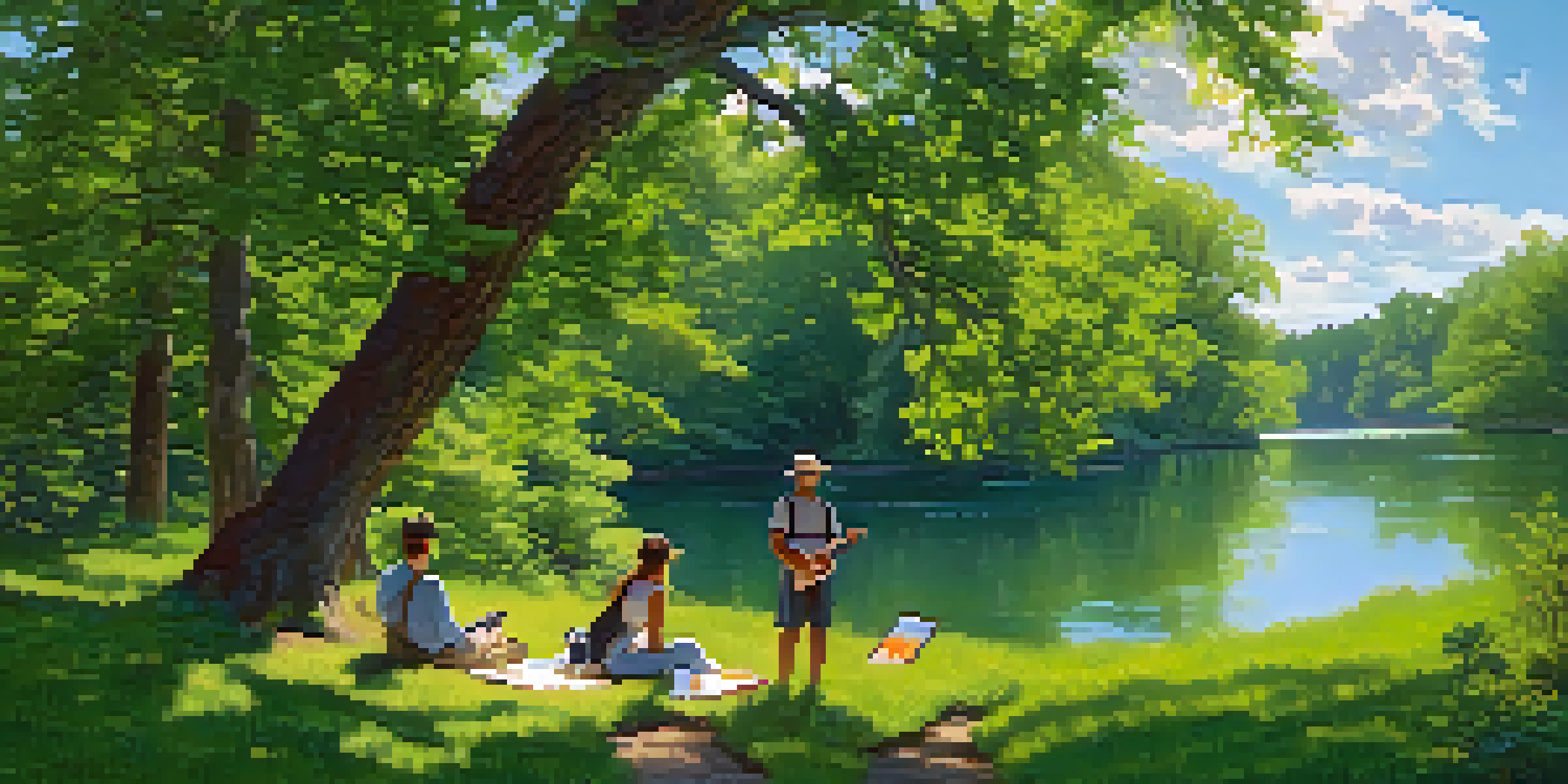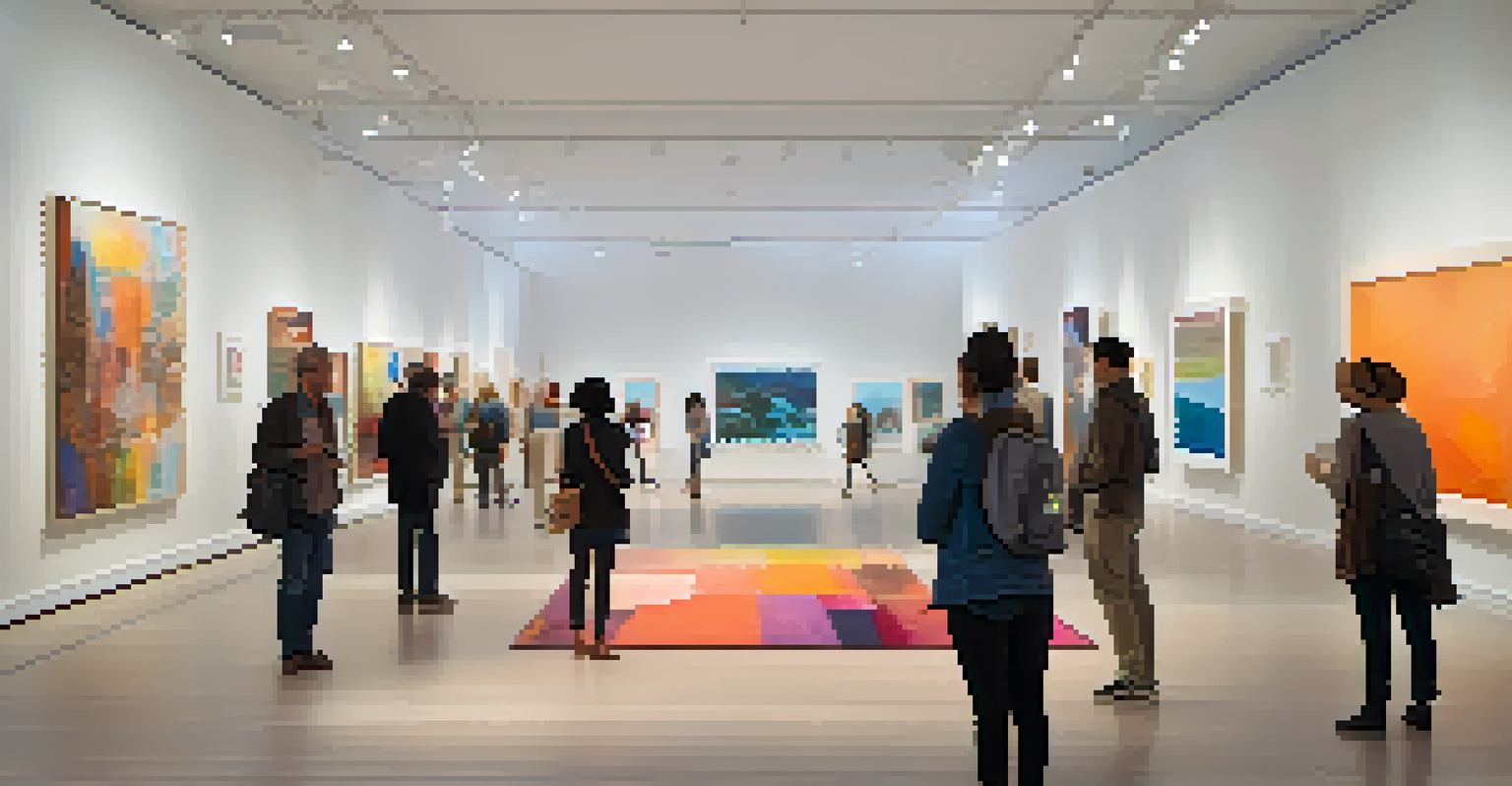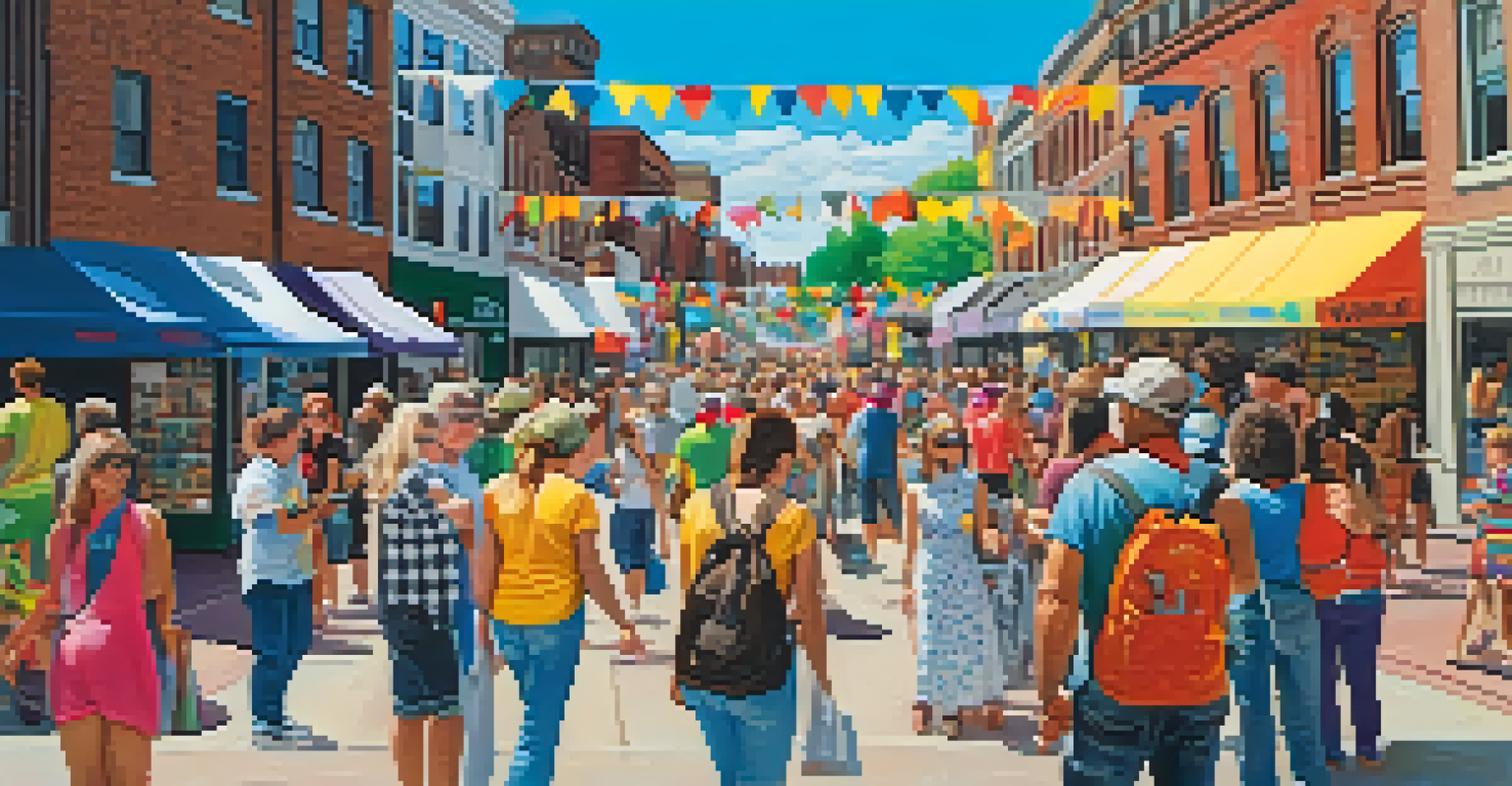Art Movements in Rochester: A Journey Through Time

The Birth of Art in Rochester: Early Influences
Rochester's art scene began to take shape in the early 19th century, influenced by the city's growth and industrialization. Artists were inspired by the lush landscapes and the Genesee River, which became central themes in their work. This period saw the emergence of local talent who sought to reflect the beauty of their surroundings through their art.
Art enables us to find ourselves and lose ourselves at the same time.
As more settlers arrived, the cultural fabric of Rochester became richer, leading to a blending of artistic styles. The Hudson River School, known for its romantic depiction of American landscapes, found echoes in local artists’ works. This early influence set the stage for a unique Rochester art identity that would evolve over the decades.
Moreover, the establishment of institutions like the Rochester Art Club in 1890 provided a platform for artists to collaborate and showcase their work. This fostered a community that valued creativity and laid the groundwork for future art movements in the city.
The Rise of Impressionism in Rochester
By the late 19th century, impressionism began to make waves in Rochester, reflecting a global trend that captured fleeting moments and natural light. Local artists were inspired by the movement, experimenting with brush strokes and colors to convey the essence of their subjects. This shift in style marked a departure from the more traditional realist approaches that had dominated earlier.

Exhibitions showcasing impressionist works drew attention and sparked discussions about art's evolving nature. Artists like William H. Hays and his contemporaries began to embrace this new style, depicting everything from city life to serene landscapes. Their contributions helped solidify Rochester's place in the broader context of American art during this period.
Rochester's Artistic Roots
The city's art scene blossomed in the 19th century, shaped by its landscapes and cultural influences.
The vibrant palette and expressive techniques of impressionism resonated with the community, encouraging art enthusiasts to explore and appreciate this new aesthetic. As more artists adopted these principles, it became clear that Rochester was not just a passive observer of art movements but an active participant in their evolution.
Modernism Takes Hold: A Shift in Perspective
As the 20th century approached, modernism began to influence Rochester's art scene, breaking away from traditional forms and exploring new concepts. Artists started to experiment with abstraction, cubism, and surrealism, challenging the norms of representation. This period marked a significant shift, as artists sought to express their inner thoughts and emotions rather than merely recreate the world around them.
Every artist was first an amateur.
Pioneers of modernism in Rochester, such as Charles E. Burchfield, pushed boundaries with their innovative techniques and subjects. Burchfield's work, characterized by vibrant colors and expressive forms, resonated deeply with the local audience. His ability to capture the essence of nature while infusing it with personal emotion exemplified the modernist ethos.
The rise of modernism not only transformed artistic practices but also influenced public perception of art. It encouraged viewers to engage with art on a deeper level, fostering a sense of connection and introspection that continues to be relevant in contemporary discussions about art.
The Impact of the 1960s and 1970s Art Movements
The 1960s and 1970s were pivotal decades for Rochester's art scene, marked by the emergence of various movements such as pop art and minimalism. Artists began to explore social themes, incorporating popular culture into their work and challenging traditional notions of art. This period saw a vibrant exchange of ideas, with artists drawing inspiration from the political and cultural upheavals of the time.
Local art institutions played a crucial role in supporting these movements, hosting exhibitions and fostering dialogues about contemporary issues. The Rochester Contemporary Art Center became a hub for artists looking to push boundaries and engage with the community. Through their innovative works, artists like Robert G. Smith and others contributed to a dynamic and evolving art landscape.
Modernism and Evolution
The shift towards modernism in the 20th century encouraged artists to explore new forms and express deeper emotions.
This era also encouraged collaborative projects that united artists from different backgrounds and disciplines. By breaking down barriers and encouraging experimentation, Rochester became a microcosm of the broader art movements happening across the country, reflecting a time of exploration and change.
Contemporary Art: A Fusion of Styles and Ideas
In recent years, Rochester's contemporary art scene has flourished, showcasing a rich tapestry of styles and influences. Today's artists blend traditional techniques with modern themes, creating works that resonate with diverse audiences. This fusion reflects a broader trend in the art world, where boundaries between styles are increasingly blurred.
Emerging local artists are using innovative mediums and technologies to express their visions, from digital art to mixed media installations. Spaces like the Visual Studies Workshop and the Eastman School of Music provide platforms for experimentation and collaboration, nurturing a new generation of creators. This environment encourages artists to think outside the box and engage with pressing social issues.
Moreover, community involvement has become a hallmark of Rochester's contemporary art scene, with initiatives aimed at making art accessible to everyone. Public art projects and open studio events invite residents to engage with artists, fostering a sense of connection and shared experience that enriches the cultural landscape.
The Role of Art Institutions in Rochester's Evolution
Art institutions in Rochester have played a vital role in nurturing talent and preserving the city’s artistic heritage. Organizations like the Memorial Art Gallery and the Rochester Contemporary Art Center have been instrumental in showcasing both historical and contemporary works. These institutions serve as cultural hubs, providing resources, education, and support for artists and art enthusiasts alike.
Through exhibitions, workshops, and community outreach programs, these institutions help to foster a vibrant art scene that encourages creativity and dialogue. They not only provide a platform for established artists but also champion emerging talent, ensuring that the local art community remains dynamic and diverse.
Future Trends in Art
Emerging themes like sustainability and technological innovation are set to influence Rochester's art landscape moving forward.
Additionally, these institutions often collaborate with artists and organizations, creating opportunities for cross-disciplinary projects. This collaborative spirit not only enriches the local art scene but also strengthens the community by connecting people through shared experiences and appreciation for the arts.
The Future of Art in Rochester: Trends and Predictions
As we look to the future, Rochester's art scene is poised for continued growth and evolution. Emerging trends such as sustainability and social practice are influencing artists, prompting them to address critical issues through their work. These themes resonate with a new generation of creators who are passionate about making a difference in their communities.
Furthermore, technological advancements are opening new avenues for artistic expression, allowing artists to explore innovative mediums and engage with audiences in exciting ways. Virtual reality, augmented reality, and digital installations are just a few examples of how artists are pushing the boundaries of traditional art.

The collaborative spirit that has characterized Rochester's art scene will likely continue to thrive, fostering partnerships among artists, institutions, and the community. This synergy will not only enrich the cultural landscape but also ensure that art remains a vital and transformative force in Rochester for years to come.